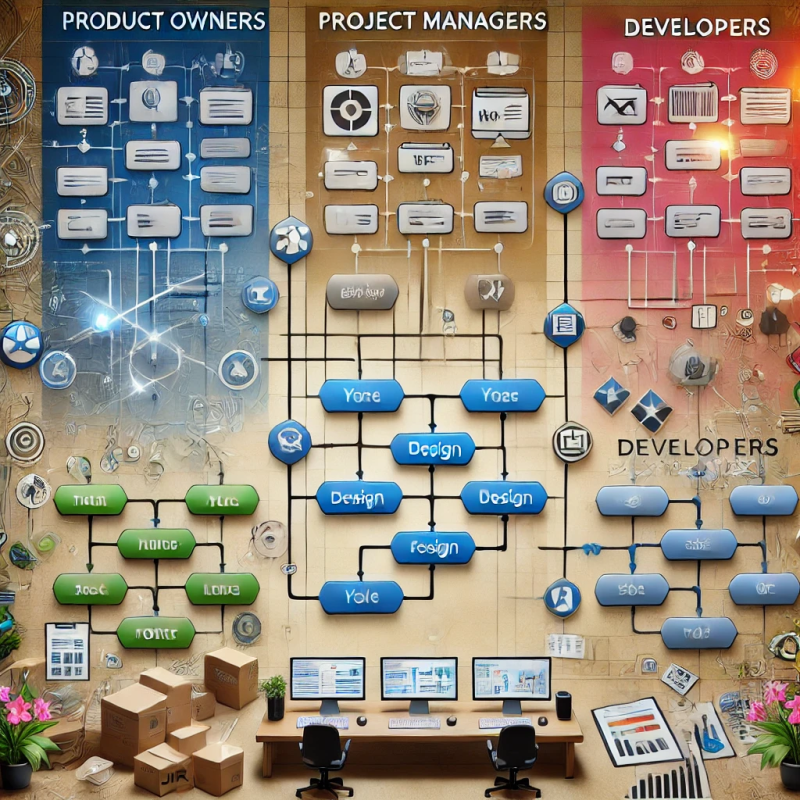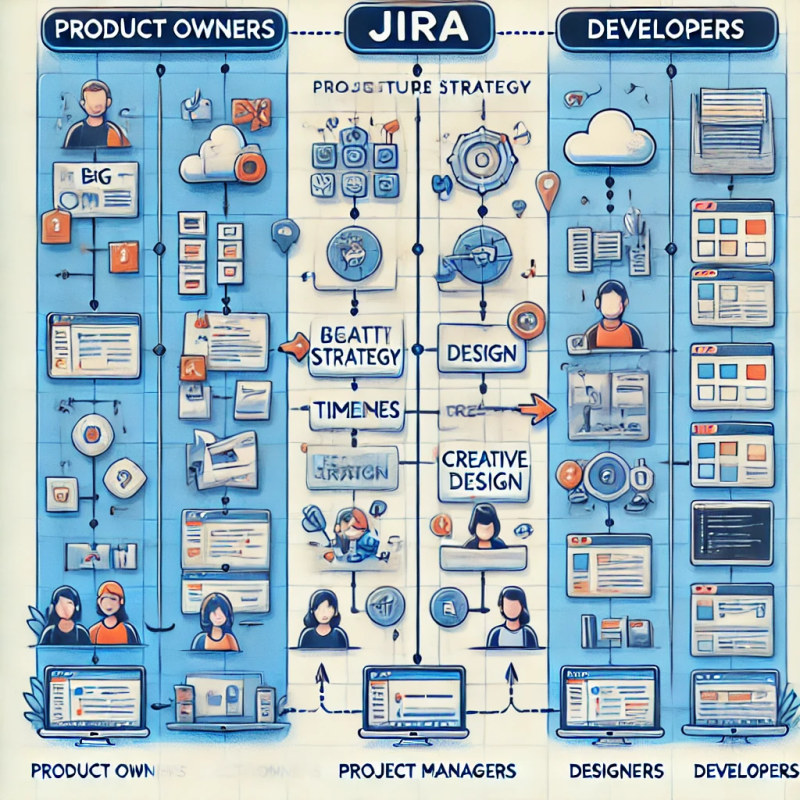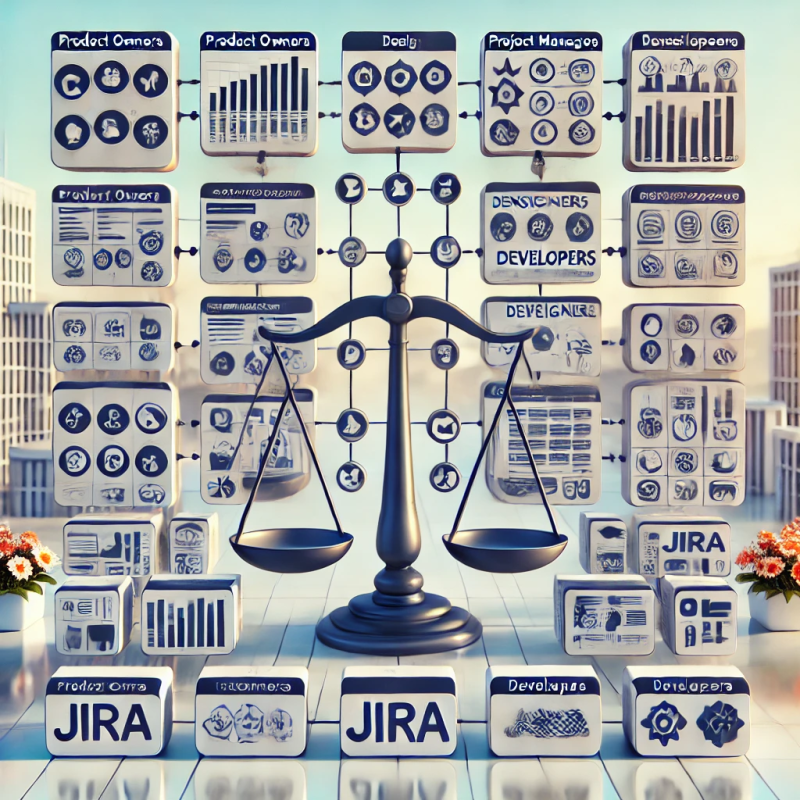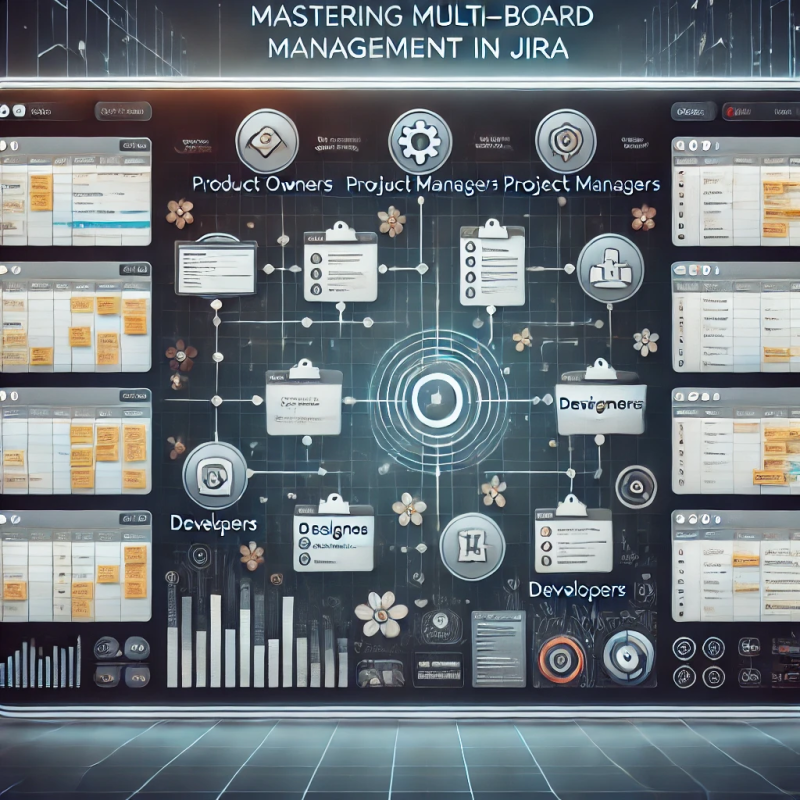Navigating the Maze of Multiple JIRA Boards: A Guide for Software Development Teams
Imagine you’re at the helm of a major software development project, where you're coordinating efforts between 5 project managers, 4 designers, and a team of 40 developers. Each group has its own responsibilities, timelines, and priorities.

To manage this effectively, you decide to set up multiple boards in JIRA—one for each role: Product Owners (POs), Project Managers (PMs), designers, and developers. On paper, it seems like the perfect solution. But as the project progresses, you start to notice the challenges and opportunities that come with this setup.
Why Multiple Boards?
In a complex project, different teams need to focus on their specific tasks without being overwhelmed by unrelated activities. The idea behind creating separate JIRA boards is simple: let each team see what they need to see and focus on what matters most to them. POs can track strategic priorities, PMs can manage timelines, designers can iterate on visuals, and developers can dive into code.

Each board becomes a microcosm of the larger project, a tailored environment where each team can operate at its best. But as you dig deeper, you realize that the real challenge lies in keeping all these microcosms aligned with the project's overall goals.
The Upsides: Clarity and Focus
With separate boards, you give each team the clarity they need. POs and PMs can focus on the big picture without getting bogged down in the details. Designers can experiment and iterate, knowing that their board is a space for creativity and collaboration. Developers can tackle their sprints without worrying about the design changes still in flux.

This setup also brings clarity to communication. Each board acts as a dedicated channel, where relevant discussions take place. You don’t have to sift through endless tasks to find the ones that matter to you. Everything is organized, and everyone knows where to look for updates.
The Downsides: Complexity and Silos
But this approach isn’t without its drawbacks. The first challenge you encounter is coordination. With so many boards, keeping everyone on the same page becomes a full-time job. What happens when a delay on the design board impacts the development timeline? How do you ensure that POs and PMs are aware of shifts in priorities across teams?

Then there’s the risk of creating silos. When teams are too focused on their own boards, they can lose sight of the bigger picture. Misaligned goals, duplicated efforts, and conflicting priorities can all creep in. And as the project grows, so does the administrative overhead. You find yourself switching between boards, trying to piece together the complete story of the project.
Finding the Balance
So, how do you manage this complexity without losing the benefits of having specialized boards? It starts with communication. Regular check-ins between teams are essential. You need to bridge the gaps between boards, ensuring that everyone is aware of dependencies and potential roadblocks.
Cross-board reporting becomes your best friend. By generating reports that span multiple boards, you get a unified view of the project’s progress. This helps you spot issues early and keeps all teams aligned.

Standardizing workflows across boards can also help. While each team’s board might have its own quirks, maintaining some level of consistency makes it easier for teams to collaborate. It reduces confusion and ensures that everyone is following the same playbook.
Finally, don’t be afraid to consolidate boards if needed. If you find that some boards are causing more confusion than clarity, it might be time to group related activities together. The goal is to keep the project manageable, not to create an administrative nightmare.
The Takeaway
Managing multiple JIRA boards for a large software development project is a balancing act. On one hand, you have the benefit of specialization and focus. On the other, you face the challenge of coordination and the risk of silos. By focusing on clear communication, cross-board reporting, and standardized workflows, you can navigate this complexity and keep your project on track.

In the end, it’s not just about managing boards—it’s about managing the connections between them, ensuring that every team, from POs to developers, is moving in sync towards a successful project outcome.

